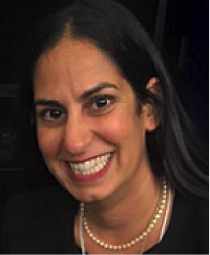American Psychological Association Division 50
APA 2019 Recap

Seema L. Clifasefi, PhD
Diversity Committee Chair
As things are well underway in preparation for the 2020 Annual convention, it’s hard to believe it’s only been two months since the 2019 APA Convention wrapped up in Chicago this past August. Division 50 was proud to represent and host high quality programming that covered outside the box approaches to studying and treating substance use behaviors—laying the groundwork nicely for the upcoming 2020 theme: “50 Years of Harm Reduction: Past, Present and Future” (Calls for Proposals open now: (https://addictionpsychology.org/conventions/apa-annual-convention). The 2019 programming kicked off with Dr. Patt Denning and Jeannie Little offering a harm reduction psychotherapy workshop orienting attendees to this humanizing, empowering, social justice and public health approach to helping people choose how to resolve substance misuse, and closed with a timely presentation by Dr. Thomas Eissenberg and his team of interdisciplinary scientists discussing tobacco regulation and informing the FDA about electronic cigarettes and vaping.
In between these powerful bookend presentations, conference attendees were lucky to have had the Chicago Recovery Alliance (CRA)—one of the oldest, and largest harm reduction programs in the country—curate and present an informative panel on research, practice, policy and advocacy around Safer Consumption Sites (SCS’s). The research is clear: Use of SCS’s is associated with fewer overdoses, fewer needles littering public spaces, less drug related crime, and an overall increase in people being connected to treatment. CRA also generously hosted an off-site visit and provided a hands-on exploration of their full-scale high-fidelity prototype of an SCS, and a first-hand look at the on-the-ground harm reduction practices and services they offer to the Chicago drug user community.
Meanwhile, back at the convention center, conference goers heard from members of the community with lived experience of homelessness and substance use problems about their role in helping researchers to develop, evidence based harm reduction oriented treatments for both alcohol and smoking. Students and early career psychologists presented their excellent research at a joint Division 28/50 social hour poster session, coordinated and supported in large part by Drs. Bettina Hoeppner (PI: R13 NIAAA) and Meyer Glantz and his team at NIDA. Dr. John Kelly challenged his audience in his master lecture to think about the importance of language in stigma, discrimination, problem conceptualization, and remission; and cutting edge research around MDMA assisted therapy (Dr. Harriet De Wit and colleagues) and psychedelics as behavior change agents (Dr. Roland Griffiths and colleagues) were introduced, followed by a fascinating conversation around psychedelic therapy featuring renowned author, Michael Pollan. And, these are just a few of the 2019 highlights—the list goes on. As the outgoing program chair, I want to thank everyone who contributed to making Division 50 programming such a success, including, Division 50’s executive board and committee members, Division 28’s program chair (Dr. Meredith Berry), Division 50’s co-program chair (Dr. Susan Collins) and most of all, Division 50’s past president (Dr. Jennifer Buckman) for having the vision, foresight and leadership to step ‘outside the box’ and give us an amazing theme to work with. I look forward to what 2020 will bring.
And, speaking of 2020…I am honored to step into a new role for Division 50 this year, as your Diversity Committee Chair. I am currently working to better understand where we are as an organization in relation to diversity, equity and inclusion across multiple arenas, including membership, representation in research, and general Division 50 policies. My goal is to work both within our own division and across APA divisions to build a more inclusive and equitable Division 50 which fosters diversity of thought and perspectives across multiple domains. For example, according to our most recent APA reports provided to our esteemed Division 50 Membership & Program Chair, Dr. Susan Collins, our Division 50 population is approximately 60% male, 0.1% American Indian/Alaska Native, 1.8% Hispanic/Latinx, 2.5% Asian, 1.6% Black/African American, 0.8% Multiracial; and 0.7% under 30. As Dr. Collins noted in her introduction as Membership Committee Chair, we need to do better in terms of engaging ECPs and non-male identifying folks from diverse racial and ethnic backgrounds. And, focusing on membership is just one facet to increase our representation. We also need to be encouraging a diverse research portfolio that addresses these issues in our programming, as well as continually examining our Division 50 policies and practices to ensure that we are moving forward in an inclusive and equitable way. Luckily, Dr. Collins and I have a long history of successfully working together to address some of these issues in our work together over the past 13 years.
I have been deeply appreciative of those of you who have reached out to share your thought and ideas thus far (still getting my bearings-thank you for your patience), particularly members of the CPA Diversity Committee. THANK YOU! I would love to hear from more of our membership about what you see as your top priorities for this committee moving forward (seemac@uw.edu). Also, we are recruiting committee members, so please join us in these efforts. Finally, I have created a 3-5-minute anonymous survey to garner a snapshot of what you all feel should be top priorities for our committee as we set our priorities for this year (add link here). I look forward to working with you all to create a Division 50 that we are all proud to be a part of and can serve as a role model for our fellow colleagues.
Seema L. Clifasefi, PhD, is an associate professor and codirector of the Harm Reduction Research and Treatment (HaRRT) Center in the Department of Psychiatry and Behavioral Sciences at the University of Washington-Harborview Medical Center in Seattle, WA. Her research lies at the intersection of substance use, mental health, criminal justice and housing policy, with an emphasis on populations with lived experience of homelessness, substance use and/or involvement in the criminal justice system. Over the past decade, she has worked collaboratively with diverse communities to develop, evaluate and disseminate programs and interventions that aim to reduce substance related harm, improve quality of life, and promote social, racial and economic justice.

Resources are available for those struggling with addiction and numerous effective treatments exist. Whether you are looking for help for yourself or a loved one, we encourage you to seek out help.